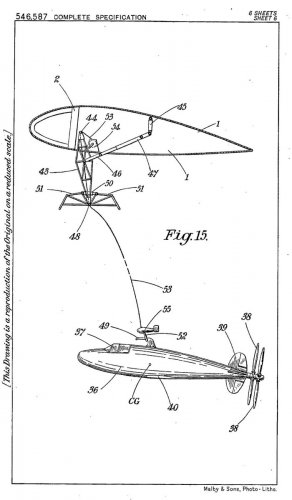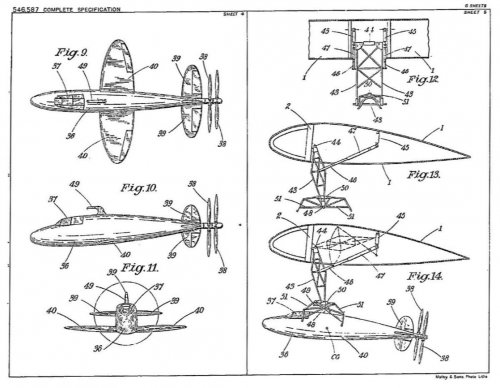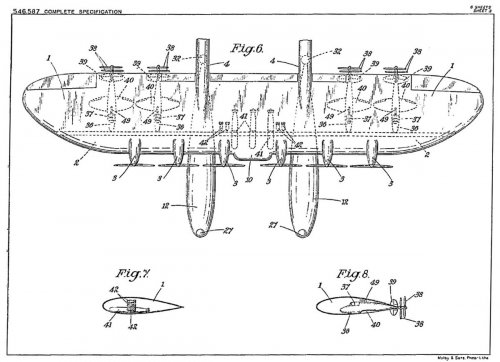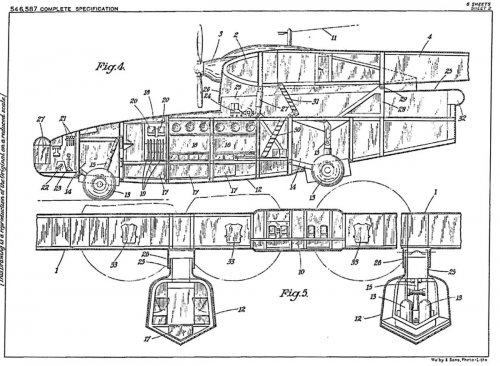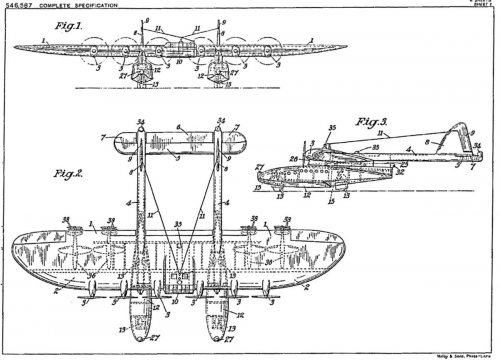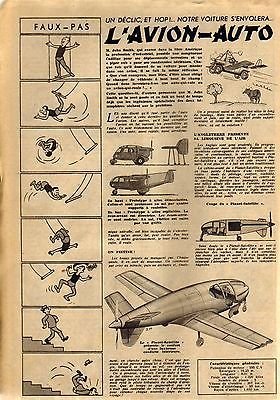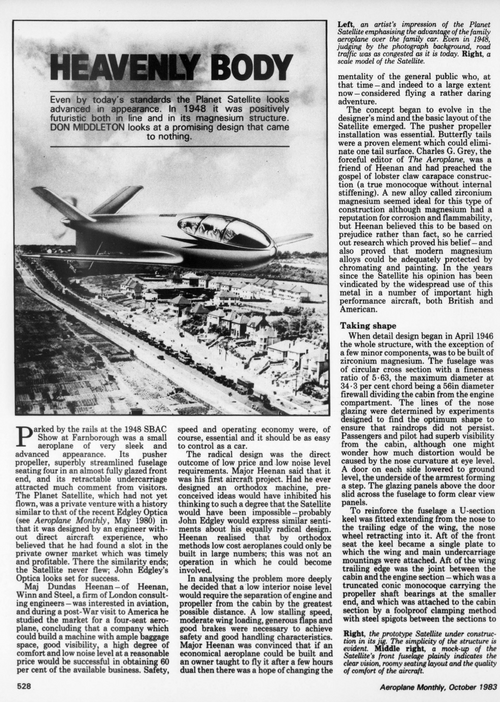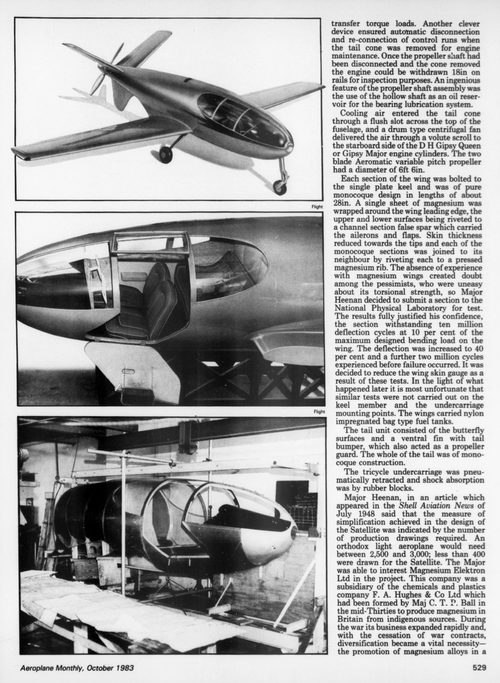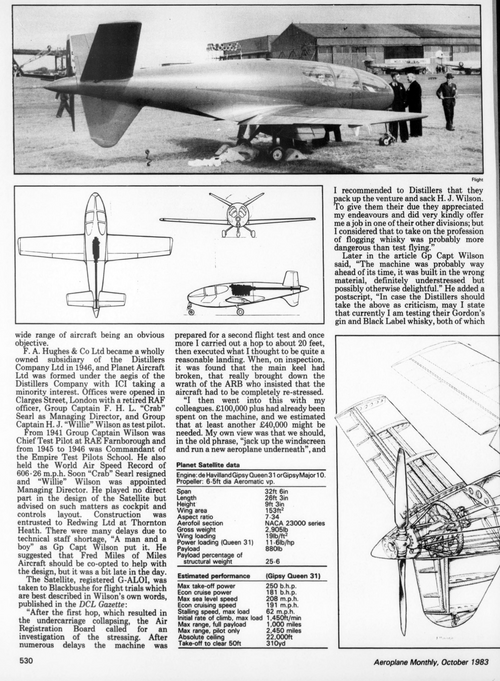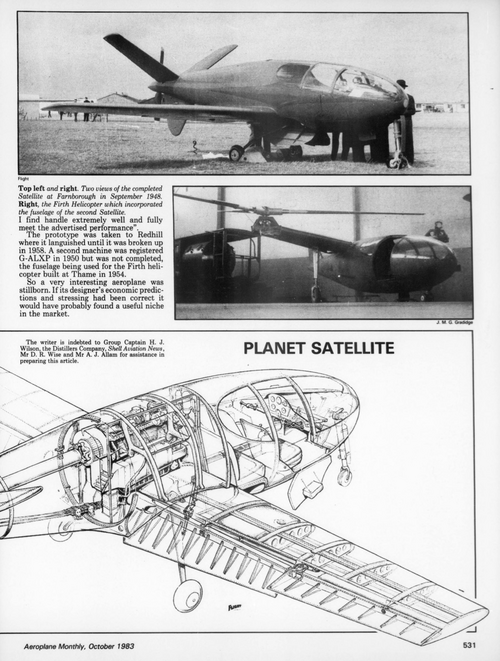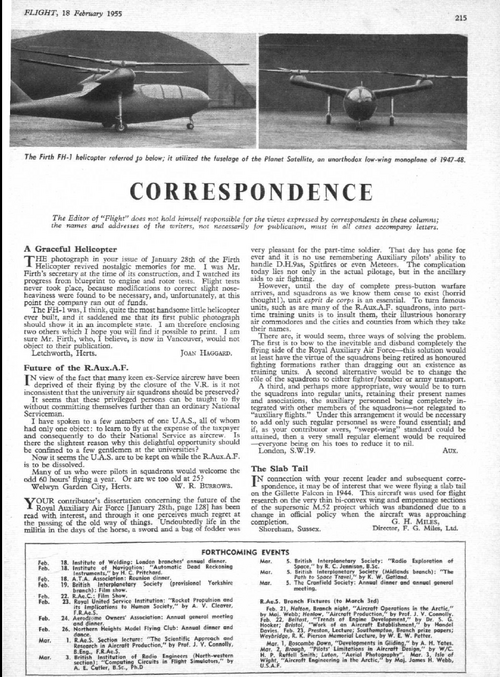There are some interesting additions to make to this story, starting with the Burnley Satellite. (see post #37 and https://hushkit.net/2015/10/16/whisky-business-the-strange-story-of-the-planet-satellite/
Sir Charles Dennistoun Burney was a freelance engineer with a long history of innovative inventions mainly concerned with armaments. Just prior to WW2 he was working with Neville Shute Norway, who had been ‘kicked-out’ of Airspeed, on a new form of weapon sight and two types of gliding ordnance, the Toraplane and Doravane. Both designs were patented by Burney.https://weaponsandwarfare.com/british-aerial-ordnance-exotica/
In 1941 Burley submitted a patent for a large aircraft designed to carry a number of smaller ‘satellites’, which were small pusher aircraft. These were like sleeker versions of the McDonnell XF-85 Goblin fighter and were to be launched and retrieved in a similar way. The drawing in post #37 is derived from the patent and was produced by the Broadway Trust Co Ltd, an investment fund company associated with ordnance development with whom Burley held patents.
Moving on to the Planet Satellite. Major Dundas Heenan was an engineer, the son or grandson of the co-founder of the large engineering group Heenan and Froude. He worked for this company for many years and judging from his patents this was mainly associated with high-pressure vessels, valves and similar. When the company went into liquidation in 1935 he appears to have moved on to work freelance. In the war he was deeply involved, on the Air Ministry side, in the development of jet engines. In early 1946 he formed the consultancy Heenan, Winn and Steel (HW & S) and Planet Aircraft Ltd must have been launched around the same time with Managing Director Gp Cpt F.H.L Searl. The first report of the Satellite project appeared in Flight in November. Heenan applied for a patent for the construction methods associated with the Satellite in early 1947. In mid-1948, just before the first flight attempt of the Satellite, Gp Capt H.J.Wilson resigned his commission in the RAF and joined as a Director. Wilson had taken the air speed record in 1945 flying a Gloster Meteor.
I can find no direct link between Burney and Heenan but as reporting in wartime was highly restricted this does not mean that there was no connection between the two Satellite projects. It does seem more than a coincidence that two aircraft sharing an unusual configuration would have the same name.
![Planet_Aircraft_Satellite_(Sept_1947)_Brochure_[1].jpg](/data/attachments/107/107011-1402ac95b8e918bbfad51d2ca070e8ee.jpg) Planet_Aircraft_Satellite_(Sept_1947)_Brochure_[1].jpg104.9 KB · Views: 129
Planet_Aircraft_Satellite_(Sept_1947)_Brochure_[1].jpg104.9 KB · Views: 129![Planet_Aircraft_Satellite_(Sept_1947)_Brochure_[2].jpg](/data/attachments/107/107012-b7dcb485c2ed70652eb8444d072f0b1f.jpg) Planet_Aircraft_Satellite_(Sept_1947)_Brochure_[2].jpg96.5 KB · Views: 108
Planet_Aircraft_Satellite_(Sept_1947)_Brochure_[2].jpg96.5 KB · Views: 108![Planet_Aircraft_Satellite_(Sept_1947)_Brochure_[3].jpg](/data/attachments/107/107013-f6868ad01aa0d98796ba63d984b74ace.jpg) Planet_Aircraft_Satellite_(Sept_1947)_Brochure_[3].jpg131.1 KB · Views: 120
Planet_Aircraft_Satellite_(Sept_1947)_Brochure_[3].jpg131.1 KB · Views: 120![Planet_Aircraft_Satellite_(Sept_1947)_Brochure_[4].jpg](/data/attachments/107/107014-f1d6fd28df89edaa697c85e9d662a5e3.jpg) Planet_Aircraft_Satellite_(Sept_1947)_Brochure_[4].jpg102 KB · Views: 134
Planet_Aircraft_Satellite_(Sept_1947)_Brochure_[4].jpg102 KB · Views: 134
